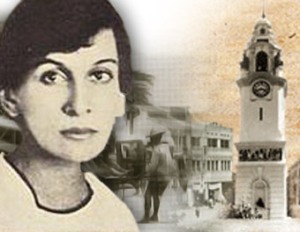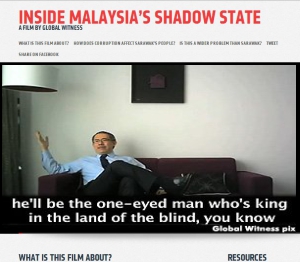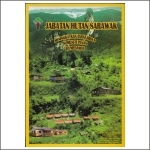 By Mariam Mokhtar
By Mariam Mokhtar
MALAYSIANS have a very poor sense of history. In recent decades, our education system and schools placed little emphasis on the subject. What passed off as history was knowing which political party and politicians featured prominently in Malaysia’s recent past.
Besides this and the study of the Malacca sultanate, few children have even heard of the two world wars or of the birth of democracy or the influence of powerful people through the ages.
Sadly, many children memorise certain historical facts just so they can pass their history exams.
This unhealthy trend is finally being addressed. Although films like Sarjan Hassan and Leftenan Adnan, are examples of local heroes remembered by Malaysian youth, there still exists a wide gap in historical knowledge.
However, an eight-part drama mini-series is also hoping to fill the gap in Malaysia’s local history. It will feature one Malayan woman who defied the Japanese occupiers in war-torn Malaya in the 1940s.
She is Sybil Kathigasu and is our World War II heroine. Her nursing skills and quiet determination have also termed her the title, Malaysia’s Florence Nightingale.
 “She’s a war heroine who was tortured and beaten up and yet she survived it all,” explained 32 year-old Elaine Daly, a former Miss Malaysia Universe 2003, beauty queen-turned-actress, who portrays her in the series. Incidentally, Elaine is related to the heroine and would have been her grand-niece, had Sybil lived. “After the war, Sybil was awarded the George Medal, the highest British civilian award for bravery, by King George VI.”
“She’s a war heroine who was tortured and beaten up and yet she survived it all,” explained 32 year-old Elaine Daly, a former Miss Malaysia Universe 2003, beauty queen-turned-actress, who portrays her in the series. Incidentally, Elaine is related to the heroine and would have been her grand-niece, had Sybil lived. “After the war, Sybil was awarded the George Medal, the highest British civilian award for bravery, by King George VI.”
Daly plays Kathigasu in Apa Dosa Aku? (What is my sin?): The Sybil Kathigasu Story – as part of a wider campaign to celebrate Malaysian history.
Tortured mercilessly
The real Sybil, according to older daughter Olga, was of French and Penang Eurasian descent. She married AC Kathigasu, a doctor, while she was a trained nurse and together they operated a clinic in Ipoh from 1926 until Japanese troops arrived in Malaya on 26 December, 1942.
The couple, along with their two daughters Olga and Dawn and an adopted son William, moved to a small town called Papan.
Together with her husband, the resistance fighter opened another dispensary in Papan and secretly provided the guerrilla forces with medical treatment and supplies as well as information to the resistance forces during the Japanese Occupation of Malaya.
They were betrayed and she was caught by the Japanese in 1943 and tortured mercilessly. She underwent the “Tokyo wine treatment” whereby water was pumped into her and her torturer would stomp on her stomach and force water out of her through all her orifices.
She was beaten, burnt and kicked on the jaw in an attempt to break her. She could not walk, lost all her fingernails and had broken bones everywhere, including her skull. Her five-year-old daughter, Dawn, was dangled from a tree and her torturers threatened to roast her child alive with charcoal burning beneath her.
Despite being tortured and thrown into prison by the Japanese military police, Sybil never divulged information about the resistance movement. She survived the ordeal although her health was severely affected after the various injuries sustained during her incarceration.
When Malaya was liberated in 1945, Sybil was flown to Britain for medical treatment. She was awarded the George Medal for Gallantry, the only Malaysian woman to receive the medal for bravery.
The two-storey shophouse at 74 Main Street in Papan now belongs to a private individual and is open to tourists for viewing. The shooting of the drama was done entirely in Perak and also at the house, from last December to early February this year. Everything mentioned in her memoir No Dram of Mercy was preserved in the house, including the well-concealed hole under the staircase where the radio was hidden.
A story we should all know
 Sybil Kathigasu died in 1948, in Lanark, Scotland, from acute septicaemia brought on by her previous injury sustained during her torture. In 1949, her remains were returned to Ipoh, where a huge crowd paid tribute and accompanied her cortege to her final resting place in the grounds of St Michael’s Church.
Sybil Kathigasu died in 1948, in Lanark, Scotland, from acute septicaemia brought on by her previous injury sustained during her torture. In 1949, her remains were returned to Ipoh, where a huge crowd paid tribute and accompanied her cortege to her final resting place in the grounds of St Michael’s Church.
Director Bernard Chauly is retelling the story of Sybil Kathigasu, based on her memoir. When asked what message he wanted relayed, he said: “It is one woman’s struggle and sacrifice driven by deep personal conviction for justice, in the face of inhumanity at a time when Malaya was upside down. For those who’re familiar and passionate about her story, this series need no introduction. For the majority of the Malaysian public, the simple message is: here is a story we should all know. One that should be in our history books.”
Bernard’s films normally feature female protagonists: “The contribution of women to the course of history, ours included, has been under- documented, under-recognised and often untold.
For him, the Sybil Kathigasu story is a perfect example: “Luckily for us, she lived to tell her story and penned down her gripping experiences. In short, it is a rare historiography of a true wirawati negara ( national heroine).”
Sybil Kathigasu is without doubt a Malaysian heroine and 12 June 2010, marks the 62nd anniversary of her death from the torture she received at the hands of the Japanese military police.
She, like many others in the war effort, gave the ultimate sacrifice to the nation in order that we may live in peace and security.






















I love history. Why were many unsung heroes/heroines never made public? Quite confusing. I think there is no personal interest or political interest in our government. Making fast bucks is better than digging up old histories.
Comment by Zulkiefly Omar — April 4, 2018 @ 9:07 PM |
A woman with big heart!! As Malaysian iam proud of her!!
Comment by Mohd firuz Ali — September 6, 2016 @ 6:14 AM |
Actually the picture is of St. michael Institution. St. Michael Church is opposite of Marian Convent. Referring to the photo inaccuracy.
Comment by Mogan — September 5, 2016 @ 8:01 PM |
CHIJ Main Convent actually. Marian Convent is at Tambun Road.
Comment by Chuah TC — September 6, 2016 @ 6:59 PM |
Hi Mariam good day,
Thank you for sharing this article. In my humble point of view, as a Malaysian I was not taught history the way it was supposed to be remembered. It was never interesting. The fact of Parameswara coming to Malacca and not remembering any other Sultanate in between still bugs me.
We were suppose remember the which Sultan in a certain time period did what. There would be 3 or more Sultan Mahmud. If history was made interesting ( rather reading from textbook) and contribution of people were prioritized like your good self, I believe we will love our history.
World history was brief and fun. Ibelieve every community have played a major role in Malaysia’s independence.
Comment by K.Ganesh — September 5, 2016 @ 7:10 AM |
Just so you know, the pic is of the school St Michael’s Institution. St Michael’s Church is about 1.5km away
Comment by Ck Lau — September 3, 2016 @ 12:48 PM |
During the Japanese Occupation, St Michael’s Institution was occupied by the kempeitai (Japanese secret police), and this is the place where she was tortured.
Comment by Chuah TC — September 4, 2016 @ 7:15 PM |
POSTCRIPT ON MALAYAN HEROES
In contrast to UMNO the British openly acknowledged and honoured the role played by the MPAJA in the anti-Japanese resistance by awarding its leader Chin Peng two awards (OBE).
A contingent of the MPAJA was in the London victory march at the end of the WW11…! Can you imagine that..but soon after they started shooting at each other. Such is life!
The internet has a huge library of the hidden history of Malaya- so why not explore and be informed? Encourage the school kids to wander off into cyberspace…to read up and overcome their blank minds on their history….
Plenty of stuff on the Sarawak struggle too…
Comment by Abang — October 5, 2010 @ 2:41 PM |
REMEMBER THE MALAYAN ANTI-JAPANESE RESISTANCE HEROES & INDEPENDENCE FIGHTERS
THE UNTOLD VERSION OF MALAYAN HISTORY
Mariam Mohktar has timely drawn attention (in the Malaysian Mirror) to the obvious big black hole in “Malaysian” history- the SCANTY knowledge of our past (among the general population and a whole generation of students).
This FORGOTTEN/UNKNOWN HISTORY is largely due to the fact that the present UMNO regime has officially blacked out the real history. Instead its sycophants invent or re-write exaggerated versions of history to highlight its inflated role and self-importance. The KL BN UMNO crime syndicate has had to embellish its image by inventing new heroes or make past heroes disappear (for e.g. Hang Tuah & Co disappeared from history books since 1999..some suspected because he was an Chinese imperial guard/kungfu fighter on a mission to Malaya).
Malaya has many many unsung and unmentioned real heroes and heroines- the many that died resisting the Japanese occupation including Sybil Kathigasu and also British colonial rule. (This history has been written up by non UMNO writers long before and after UMNO appeared on the scene-Many books have been banned from being sold or disseminated publicly).
By definition anyone who resisted the brutal Japanese occupation during WW11 and British colonial rule is a hero/heroine (including Sybil K who was apparently “pro-British” but helped the MPAJA). No one should be excluded.
Sybil also wrote about her struggle- won’t it be just great for school children to read her book “No Dram of Mercy” as part of their history studies?- There are a whole stack of “great to read” books on Malaya from the left and right which really comprises the genuine “literature” of Malaya. The post “English medium” school students have missed out on all these because they may not be able to read English (U know why??)- such as famous Han Suyin’s book on Malaya “And the Rain my Drink” on the post war anti-British independence struggle- Few of us know that Han Suyin (like Sybil) was living in Malaya and selflessly served Malayans for 10 years of her life. It was an irony she married a British Intelligence officer while she had at the same time opposed British colonialism- one just wonders…hummm? She is alive & is over 90 years now). Sorry sorry wondered off on the subject….
The attached article below throws light on who the “resistance forces and guerrillas” were. They were actually the MPAJA (Malayan Peoples’ Anti-Japanese Army)in Papan at the time.
Now would the KL Gov’t permit such a TV series/film about the resistance be made locally? I bet my bottom dollar the answer is NO. The series may probably be filmed in Thailand or the Philippines and BANNED in “Malaysia”. Please surprise us!
Why? The KL Gov’t would never allow the truth to be told. If the proposed TV series is to be truthful it must show the MPAJA in a positive light. However, this would be too much of a challenge to the sanity of the people in power. They will never allow the truth be told on their public TV that the Communist Party of Malaya (CPM) led the MPAJA guerrilla forces (about 7000 under arms)in the main resistance force against the Japanese. The British through their “Force 136” helped to keep the MPAJA supplied with arms (war makes strange allies!).
Members of the MPAJA and supporters died in the fight to free Malaya from Japanese occupation. They were freedom fighters yet they have been officially called “terrorists”. We do not see any Iwo Jima style Statues as a national memorial to record their heroic sacrifices….
While on the topic – how about a TV series on Shamsiah Fakeh (CPM leader), the Malay lady who fought for Malayan Independence. Hers would also be a great series in the same period as Sybil’s story…..Her history is told in her book “Memoir -Shamsiah Fakeh- Dari Awas ke Rejimen ke 10”. She was in the famous CPM 10th Regiment (comprising of Malay communists- don’t mean to shock anyone here who never heard of a “Malay communist”. You might think impossible…but truth is stanger than the fiction created by UMNO!)
In the foreword of her book, she states that she does not want to be remembered only as the female leader of CPM. Instead, she said : “I was merely a woman fighting the British for my country’s independence and the emancipation of women.”
Below is the article on Sybil-please read on…it also gives a lovely description of Papan and glimpse of its history…(a town frozen in time). You will understand why the KL Gov’t will not allow a truthful version of the TV series to be made if ever…
The Kinta Valley, Perak State, Malaysia
Sybil Kathigasu’s Clinic: 74 Main Road, Old Papan
(Photos by Julie)
(Photos by Adrian)
In the history of the Japanese Occupation of Southeast Asia, Sybil Kathigasu stands out as a heroine of the Malayan resistance.
Sybil Daly, an Eurasian, was born in Medan. A devout Catholic and a vegetarian, she spoke fluent Cantonese. As a non-Chinese midwife, she had some freedom of movement to visit her patients living in the outlying areas. A group of mainly English speakers, both in Papan and further afield, gravitated towards Sybil for she had access to overseas news via a hidden short-wave radio, codenamed ‘Josephine’. …
It was (Ho) Thean Fook who approached Sybil and asked her to provide treatment and medical supplies to the MPAJA (Malayan Peoples’ Anti-Japanese Army) guerrillas. Sybil, who had long anticipated a role in the resistance, realised that ‘the time has come.’ She nicknamed her new assistant ‘Moru’ due to his fondness for Indian sour milk. – Kinta Valley, Pioneering Malaysia’s Modern Development
The Japanese Occupation of Malaya lasted from December 1941 to August 1945. Sybil helped hundreds of people before she was arrested, detained and interrogated by the Japanese secret police for two years. In order to extract information, they tortured Sybil and dangled her daughter from a tree over a fire. With her iron will Sybil defied her tormentors.
Three weeks after the Japanese surrender, Sybil was released. For her courage and loyalty, she was summoned to Buckingham Palace to receive the George Medal. Though treated for her injuries in a London hospital, she succumbed on 12 June 1948
Published posthumously in 1954, Sybil’s book No Dram of Mercy is one of the great books of the Malayan war years. Fifty years later, her protégé Ho Thean Fook, alias Moru, wrote two books on Papan — Tainted Glory and God of the Earth — before passing away in August 2004.
The approach to Papan is strangely scenic — giant rain trees growing along a winding stream, limpid mining ponds, a hill slope dotted with Chinese graves, a Kuan Yin Temple, then suddenly in the middle of nowhere, a brick and mortar streetscape.
A nineteenth century mining town petrified in time. Two seemingly desolate rows of shophouses, some barely standing, along a street simply called ‘Main Road’. The remains of a boomtown that once stood in the midst of tin-fields as far as the eye could see.
Remarkably, Papan begins to show signs of life towards sunset, when children come out to play and residents get home from work. Old friends hang out and chatter in the town’s only two coffee-shops.
Just off the Main Road is the house of Raja Bilah (died 1911), the headman of Papan. The Sumatran nobleman’s remarkable career as miner-trader-adventurer and leader of his people has inspired a book Raja Bilah and the Mandailings of Perak: 1875-1911 described by an
American historian as ‘the most exciting book on Malaysian history’ she has ever read. The great house was restored by the National Museum several years ago.
Papan town and Raja Bilah’s house have been used as film set, most notably by Oscar-winning production designer Luciana Arrighi for the movie Anna and the King (1999). Luciana was fascinated with Papan — a near ghost town on the edge of large mining lakes, set in a mysterious cul-de-sac, shrouded and surrounded by dark, forested hills.
The hills around Papan belong to the Hijau range. Once they were not so peaceful, but reverberated with the sound of gunfire. Sinuous jungle trails, now popular with nature-lovers, used to lead to guerrilla hide-outs. They were first used by hill rat miners, then by the Papan armed resistance and finally by Communist insurgents during the Malayan Emergency (1948-1960).
Half a century after her death, Sybil’s clinic at 74 Main Road was turned into a gallery interpreting the story of Papan town. This was done through the private effort of Law Siak Hong, currently President of the Perak Heritage Society. At the back of the house, one finds, unexpectedly, a bright and beckoning stone-and-bamboo garden.
Sybil’s last wish was to have her clinic in Papan serve the poor even after her death, but state medical services have filled the need. Instead, Hong’s history gallery, obviously put up with much thought, performs other important functions.
It pays tribute to human integrity and courage in the face of adversity. It strengthens Papan’s appeal as a place of history and memory. For visitors, 74 Main Road offers a quiet space to be touched by small town of old Malaya and, hopefully, to rethink its future.
To visit Sybil Kathigasu’s clinic,
or for tours of Papan and Ipoh, contact:
Law Siak Hong
hp (+6) 017- 5061875
Comment by Abang — October 5, 2010 @ 2:27 PM |
The Sybil Kathigasu story is heart rending, thought provocative and touches on the not too distant past of the nation’s history.
Her memoir has been resurrected into a film and perhaps a book will be forthcoming. Hers was an example of courage, bravery, determination, sacrifice and principles. Perhaps she could be awarded posthumously and her past be a mile-stone in the path of history.
I believe this nation has many more interesting past that local historians may have yet to write on.
The Bujang Valley, The Malaccan History , The White Rajahs , the legendary Langkawi Island and the Lost City in Endau Rompin are places that have a historical past, which can lend material support for memoirs, novels and films alike.
Malaysians have had the privilege to enjoy the film Legend of Gunung Ledang, which now has international standing. More than be discovered and learnt from our nation’s past.
Comment by A Dreamer Too — June 14, 2010 @ 3:15 PM |
Well I’m very much agree with Sdra. Mariam Mokhtar, that our system of education is very much a non-sucess system. Why? Well. Just to put a few of the concrete examples here. It’s dammed hard to believe that after 47/50 yrs. of being sebuah negara merdeka we’re enable to identify ourselves as an negarabangsa (nationhood)? We’ve have these n thats alike RN, dasar these n dasar thats but then we’re now still talking about national solidarity, national integrity, national policies n keeps on n on n on saying these n thats. What a sadden history of a nation is this one of Malaysia? As I recalled back one time there’re so many of our own Malysians claim our leaders’re just typical sloganized leaders? I for that being a respectful citizen didn’t concorded, but then I felt rather diappointed not to during that earlier days. Should I be, I may be of an earlier assets to nation-building by suggesting these n thats which will put nation history into it real course. Though I’m not an historian coz I’m more of an science-centric guy but I can see n feel crystal-clear that why the present UMNO/BN government want to do this to the rakyat. There’s only one reason to oppress n suppress that right of every rakyat to have a decent national outlook of an negarabangsa/nationhood so that they can maintain the status quo, just to clear things it’s a divide n rule they inheritd from the colonial masters. We need a new political will from all rakyat to change the government of the day to PR then we’ll see the changes that favor all rakyat.
Comment by Minda Mandol — June 13, 2010 @ 3:35 PM |